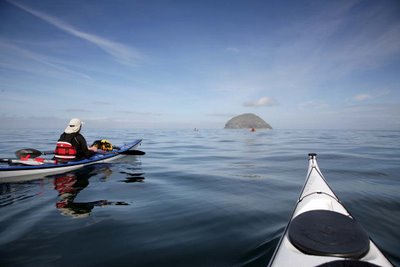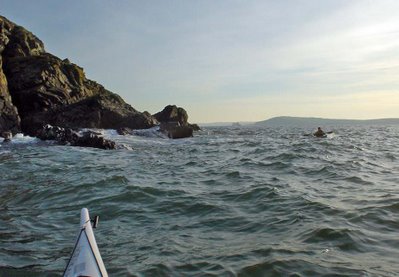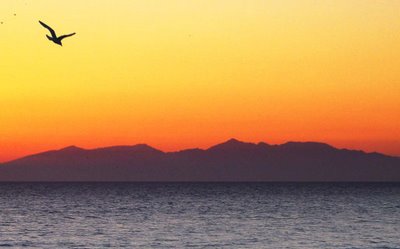
Ayrshire on Scotland's west coast is famous in sea kayaking circles not only for its spectacular sunsets behind the silhouette of Arran's "Sleeping Warrior" across the Firth of Clyde. It also supports two kayaking businesses that are renowned for their ingenious design skills. Alistair Wilson's
Lendal Paddles is the longest established but I wish to draw your attention to Jeff Turner's
Kari-tek.
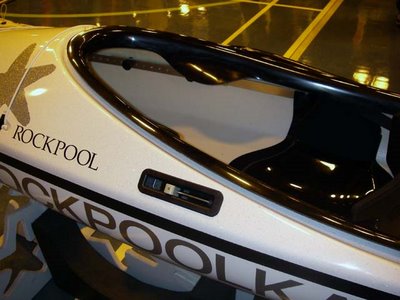
In July this year Jeff fitted one of his skegs to my wife's Alaw Bach, a skegless design. So at the
Perth show, I was surprised to spot this
Rockpool Alaw Bach fitted with a skeg from the factory.
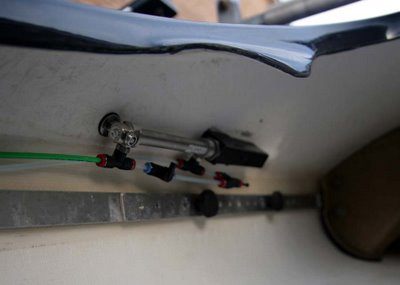
Jeff sells Hydro Skegs as aftermarket kits to add to a skegless boat like the Alaw Bach or to replace wire or rope skegs. The above photo shows the hydraulic slider and pipes which Jeff fitted to my wife's Alaw Bach.
I have kinked the skeg wire on every boat I have owned and it is a real hassle if you are away on a trip. The kink usually happens in the unsuported flexible wire that is exposed above the skeg when it is in the down position. If there is any resitance in the cable run, the the wire can kink preventing the skeg from retracting.
Kinks can also happen if the wire is exposed at the cockpit slider. If a pebble jams the skeg, an unsympathetic paddler can bend the wire by forcing the slider. I am not going to say anything about rope skegs other than that they are less desirable than wire skegs and midges.
In comparison, the Hydro Skeg works so smoothly and never requires lubrication. If you hit the bottom with the skeg, it just retracts and the slider moves into the up position ready to redeploy the skeg. I have been using the Hydro Skeg since July with no mechanical problems whatsoever.
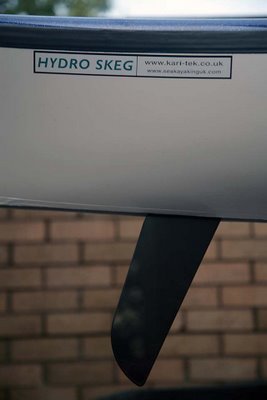
The Rockpool Alaw Bach is a great rough water play boat and in that role does not need a skeg. However, if you are using it on longer crossings, with the wind from the rear quarter, then it does weather cock. A skilled paddler will compensate by edging and sliding the paddle shaft to the upwind side for more leverage. This can get tiring and less skilled paddlers might appreciate a skeg. The Hydro Skeg has transformed the Alaw Bach for my wife and I also benefit from it. The Rockpool can be trimmed to paddle straight using varying amounts of skeg, regardless of wind strength or direction. I have never had to use the standard Hydro Skeg in the fully down position in the Rockpool.
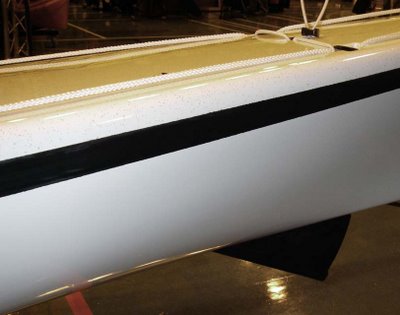
I note that the version now supplied as an original fit by Rockpool is smaller.
All in all, the Hydro Skeg is a really excellent bit of kit and I recommend it highly. One day all skegs will work this way!







